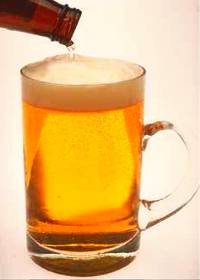 Alcohol abuse among people with the human immunodeficiency virus (HIV) is significant; one study found that 41 percent of HIV-infected patients met the criteria for alcoholism. Although alcohol abuse and HIV infection individually compromise immune function, the consequences of both conditions together is poorly understood. A study in a recent issue of Alcoholism: Clinical & Experimental Research used simian immunodeficiency virus (SIV) infection of rhesus monkeys to examine the combined effects of alcohol consumption on the primary stage of SIV/HIV infection. Researchers found that alcohol consumption may increase host susceptibility to SIV/HIV infection.
Alcohol abuse among people with the human immunodeficiency virus (HIV) is significant; one study found that 41 percent of HIV-infected patients met the criteria for alcoholism. Although alcohol abuse and HIV infection individually compromise immune function, the consequences of both conditions together is poorly understood. A study in a recent issue of Alcoholism: Clinical & Experimental Research used simian immunodeficiency virus (SIV) infection of rhesus monkeys to examine the combined effects of alcohol consumption on the primary stage of SIV/HIV infection. Researchers found that alcohol consumption may increase host susceptibility to SIV/HIV infection. "The prevalence of alcohol abuse among HIV-infected people is at least twice that found in the general population in the United States," said Gregory J. Bagby, at Louisiana State University Health Sciences Center. "Several studies indicate that individuals who abuse alcohol engage in risky behaviors such as unprotected sex with multiple partners. By itself this behavior would increase the chances of becoming infected with HIV. What is not known is whether alcohol intoxication or chronic alcohol consumption alters susceptibility to infection upon exposure to HIV beyond the behavioral effects of alcohol."
Twenty-two male rhesus monkeys, four to six years of age, were given either alcohol or sucrose for four days per week for three months. "This study had two primary purposes," said Bagby. "First, we wanted to develop an animal model to study the interactive effects of alcohol on HIV disease transmission, pathogenesis, progression and anti-viral therapy. We adapted the primate model, using SIV, which infects rhesus monkeys in the same way that HIV infects humans and produces a disease that is very similar to the human disease that leads to an immunosuppressed state and AIDS. The second purpose was to examine the effects of alcohol consumption on what is called the 'primary stage' of infection. This stage is extremely difficult to study in humans because it is rare to be able to identify infected people this early."
Approximately one week after SIV infection, there was a 64-fold increase of the SIV virus in the blood of the alcohol-treated monkeys compared to the sucrose-treated monkeys. "This most likely means that either more cells are infected with virus at this early stage or that infected cells are producing more virus," said Bagby. "If more cells are infected, it means that the alcohol increased infectivity of cells or increased the number of susceptible cells."
"The well-documented immune-weakening effects of both alcohol and HIV infection underscore the importance of understanding the potential interactions between these two common immune suppressive factors," said Shirish Barve, associate professor in the department of medicine at the University of Louisville Medical Center. "The present work by Bagby has established the much-needed animal model that could be effectively used in the study of HIV disease. Due to its similarity to HIV infection, [this] model [could] be extremely important in addressing and understanding the clinically relevant issues concerning the susceptibility of alcoholics to acquiring HIV infection and the effect of alcohol on the rate of HIV-disease progression in alcoholics."
Bagby and his co-authors intend to continue studying the effects of alcohol on HIV disease transmission, pathogenesis, progression, and therapy. "Our next study will examine the longitudinal effects of alcohol on SIV disease progression," said Bagby. "We will look at the effects of alcohol and SIV infection on disease progression, muscle wasting and behavioral deficits."